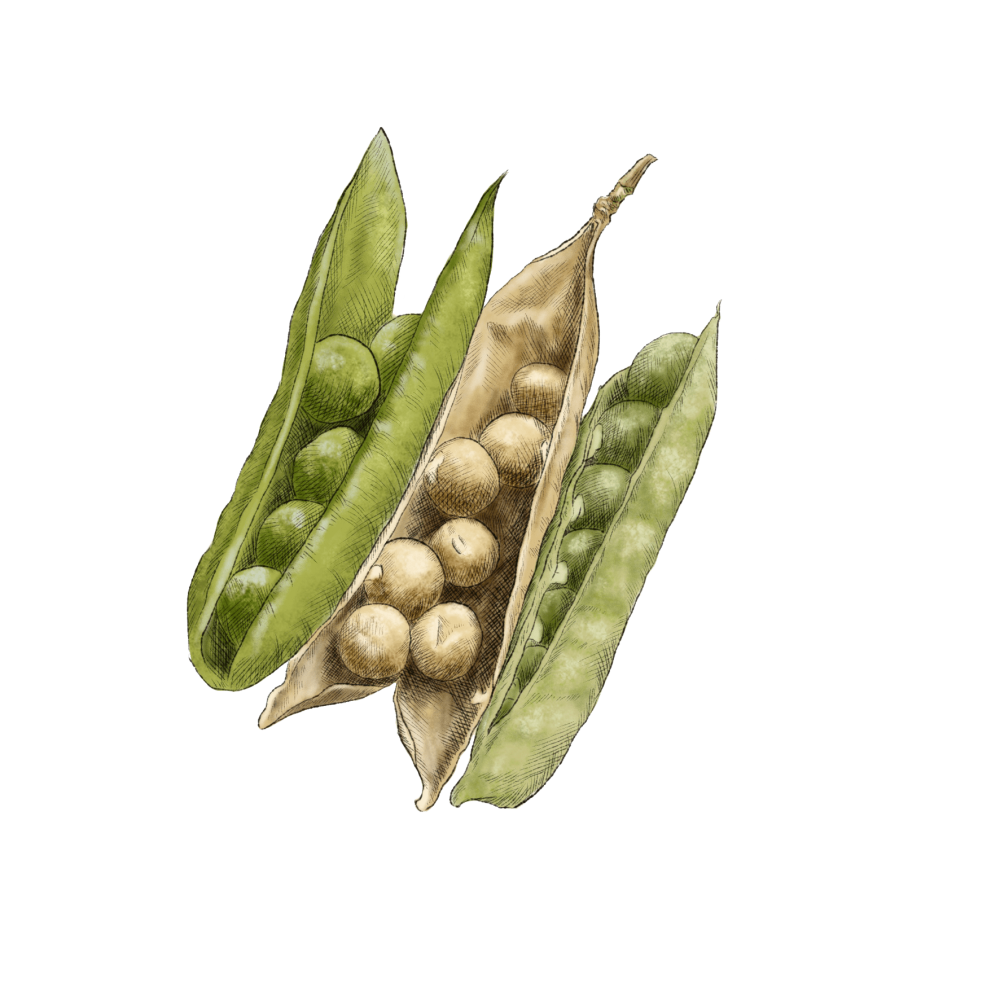Soybean

Latin Name: Glycine max
Other Names: soya bean, soy
Uses: legume, vegetable, protein source (tofu, tempeh, meat substitutes), milk (and other dairy product substitutes), fermented condiments (soy sauce/tamari, miso, doenjang, natto), oil, nut-free butter, flour, livestock feed
What are soybeans?
Soybeans are probably the world’s most important member of the pea family, but you’re far more likely to encounter them in their myriad processed applications than in their whole, form. Soy protein is ubiquitous, but it’s not all veggie burgers and bottled teriyaki sauce — soybeans have been processed for millennia. Soy sauce, soybean paste (jiang or miso), and tofu date back to ancient times in East Asia. Until about 50 years ago most soy products were relegated to health food stores and specialty markets, but now you can find tofu, soy-based meat substitutes, and yes, even whole green soybeans (edamame) in every mainstream grocery chain in America.
Why are soybeans healthy?
Soybeans are excellent sources of complete protein, healthy fats, and fiber. They're also high in vitamins B1, B9 (folate), and K, and several minerals: copper, manganese, molybdenum, and phosphorus. The many different forms soy can take — edamame, tofu, tempeh, soy milk, soy sauce, miso, and more — each have their own specific nutritional profile; the fermented types are probiotic, for example, while the liquid forms have much less fiber than solid.
What do soybeans taste like?
Fresh soybeans taste like their green pea cousins, and dried soybeans have a peanutty flavor that’s enhanced by roasting. Fermented soy products like soy sauce, miso, and tempeh have the same nutty flavor, with an added earthiness, whereas tofu typically has a very mild flavor. Soybean sprouts are crunchy and mildly grassy like other bean sprouts. Most processed foods containing soy protein have a slightly beany flavor.
Where do soybeans grow?
Soybeans have been grown in China since around 7000BC, and the modern soybean’s wild ancestor still grows throughout Russia and East Asia. Today most of the world’s soy is grown in the United States and Brazil for livestock feed. It’s the increased global demand for meat, not meat substitutes, that’s driving production.
How do I use soybeans?
Soybean sprouts and soybeans in the pod need nothing but a few minutes in a steamer and a sprinkle of salt, but dried soybeans should be treated like their leguminous neighbors in the bulk aisle. Fermented soy products are usually salty, so cut back on the salt in your dishes when using them, or use them as a condiment. Folks with peanut allergies can use roasted soybeans as a substitute.
If you’re lucky enough to live near a Japanese-style tofu shop, you might be able to get okara — the crumbled soybean hulls after the milk’s been pressed out. Add this to stews and baked goods to add fiber and protein.
What do soybeans pair well with?
Soybeans in their various forms are all typically prepared with other East Asian ingredients like ginger, sesame, and green onion, but they also like smoky flavors (smoked shoyu is wonderful if you can find it).
How to buy soybeans:
You can find them fresh or dried at Asian markets.
Fun soybean fact:
Despite some confusing information, studies show that unless you have thyroid problems, a diet heavy in whole soy products like edamame, tofu, tempeh, and soy milk is unequivocally good for you. Supplements of concentrated soy isoflavones and soy protein isolates (in the form of protein bars and processed meat substitutes), however, are associated with increased disease risk.




